Many gardeners love to grow something exotic in their sites. I put something unusual among the familiar plants among our edges, you can noticeably transform the garden, bring the original notes to it. In this article we will tell about the book, about its landing and intricacies of care.
Bookophy - General Description Flower
Bookophy - a perennial herbaceous plant used for growing in the open soil. Its growing area is moistened soil. It is often possible to meet a bookophy in nature on the cheese of the soil off the coast of rivers, lakes or other reservoirs. Many varieties of culture have good decorative qualities and are grown on household plots.
Some types of bookophy are not just to perennials, but to evergreen plants. Culture has dense foliage up to 90 cm long, the shape of the leaf is narrow, sword-shaped, shade of gray-green.
Coloros in Knieffy grows around July to September and can reach 1-1.5 m in height. However, there are varieties are more shorter and more tall. The top of the stalk of the plant is crowned with cylindrical inflorescences or a co-shaped form. The shade of their bright and catchy, why the flowers from afar resemble torches. Even the names of the varieties suggest that culture has a very expressive, spectacular view. It is possible to judge this, for example, on such names of the species of bookophy, like flamenco, traffic light, fire dance, bookophy Alcazar and others.
Although modern gardeners have already managed to cultivate the varieties of a calmer colors with yellow, greenish, pink buds.
Common varieties and types of book
Consider in more detail what kind of culture varieties most often can be found on the preservation of our country:
- Bookophy berry. This species is considered one of the tallers, because its stalks with buds grow up to 2 m in height. The inflorescences of spikelets are also quite large - up to 25 cm long. They are painted in a saturated red, coral, bright orange. Blossom continues long enough, about 2 months. This type includes the following varieties: Fire Flame, Dr. Kerr, Orange Beauty.
- Bookophy Tukka - a variety of unpretentious and cold-resistant. Stems are low, about 80 cm. Size inflorescences reach 15 cm, painted in red. Thanks to the cold resistance, this species is well winter in the middle strip, only needs shelter.
- The hybrid bookophy is a mixture of various species with characteristics inherent in it. Popular varieties include: Fleming Torch with red-orange colors, Bercks Triumph with rich-orange buds, Cardinal with its bright red corpid inflorescences, rocket with large red inflorescences and a long stem.
Bookophy, photo
Bookophy - Conditions of Growing Flower
Bookophy - Guest from African countries, therefore, she loves a hot climate. When landing bookophy and its reproduction, it is necessary to take into account this factor. If you grow a culture on your site for the first time, then seeds it is best to buy in a flower shop. There are often for sale various varieties, so you get an abundance of motley and a variety of buds on your flower bed.
Let's talk about the peculiarities of cultivation of the book:
- Putting the seeds of bookophy at the seedlings at the end of the first spring month, pre-prepared the substrate. To the soil, culture is undemanding, therefore you can simply purchase land for flowers in the store. Important characteristics of the soil: lightness, looseness, nutritionality, ability to pass air and moisture.
- Seeds germinate in a greenhouse, that is, they cover the tank with them, from time to time they ventilate, spray with water. Keep sowing under the film about 2-3 weeks, until sprouts over the ground.
- After that, you can remove and translate plants to grow at room temperature. When 2 real leaves arise on the stalks, then it's time to sear the sprouts into separate cups.
- It is possible to transfer seedlings to a permanent place in July.
Breeding of bookophy
Grow a book in the store predominantly bought in the store. But when there is a desire to multiply some particular variety, it is better to grow a culture dividing bush.
For the vegetative breeding of the book, the plant is chosen by age from 3 years. On such bushes, you can find collishes - they are the landing material. Separate subsidiaries from the parent plant in the first weeks of May. They are planted immediately into the open soil, after preparing the well and fill in them with a native earthy mixture.
At first, the plants are often watered and abundantly, as the amount of water and the irrigation frequency are somewhat reduced somewhat. Another young seedlings need to provide a shadow until they finally got involved. Bookflowers bloomed in a vegetative way, a year after the transplantation.
Care for bookophy
The cultivation of bookophy and care for it provide compliance with some rules:
- Soil on the flowerbed, where culture will grow, if possible, should be sandy. It should also be nutritious, fertilized, well explosion.
- So that the water is not stood in the soil, it is advisable to provide drainage. And you can simply plant a plant on a small hill.
- As the bookophia is grown as a perennial, it should be prepared for wintering. Preparation includes shelter for the winter. But before doing this, all the leaves of each bustle need to collect together and tie. So you protect the roots and the central part of the bush from excess moisture. Then the plant needs to be covered with a sweetheart, on top of which to hold a rubberoid, protecting the culture from water.
- Care for bookfood includes trimming. The first time they spend it in the spring when the rubberoid and the boots are removed. Then cut dead, yellowed, frozen parts of the bush. After biting buds, the bookophy is also cut off, the flowers are removed almost under the root. But if you want to assemble the seeds from the busta, then several flowers can not be cropped.
- Fertilize the bookfoot, you must need a fertilizer several times. For the first time - immediately after landing. Then, at the end of flowering, potash fertilizers should be introduced into the ground. In the spring, before the formation of new shoots, it is necessary to feed the bookophy of nitrogen and organic compositions.
- Bookophy flower, if you care correctly, it suffers infrequently. As a rule, culture is striking harmful insects eating foliage. To get rid of them, you need to make a book insecticide book. If the plant water is too often, the root rot may appear. From it, you can also get rid of it, if you treat the bush of fungicide. If some separate copies are not amenable to treatment, they need to dig and utilize, so that the remaining cultures on the flowerba are infected.
Bookophy in landscape design
Bookophyus looks attractive and decorative throughout the growing season, therefore it can be planted on the flower beds and as the main, "soling" culture, and as an addition to other plants. Tall views are successfully used to create a background or screen, from low varieties, a good decor for stone gardens, alpinarias is obtained.
If the bookophia is grown in the company with other cultures, it is important to choose her neighbors, taking into account the peculiarities of the care, periods of flowering, sizes, height of the bushes. Salvia and dahlias, Iris and Rudbecia are often planted in combination with Knamophia. An excellent neighbor for her can be Lupine, Sage, Eremurus or Gypsophila. As a completeness of the composition along the edges of the flower garden will appropriate to plant perennial decorative cereals.

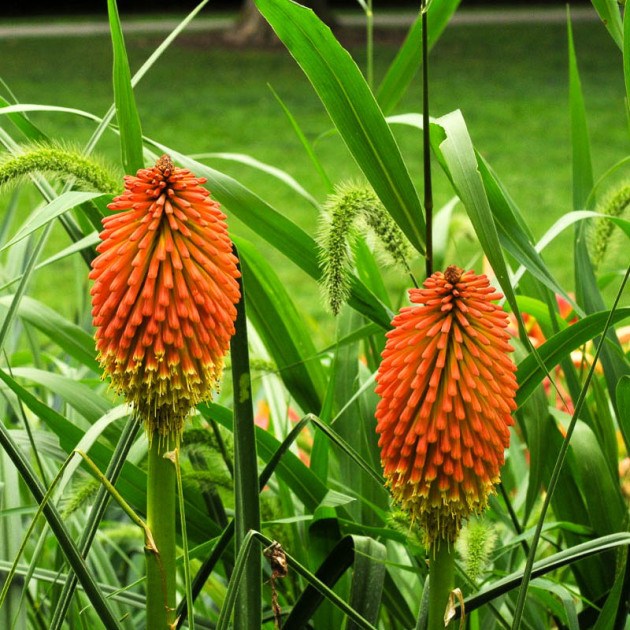
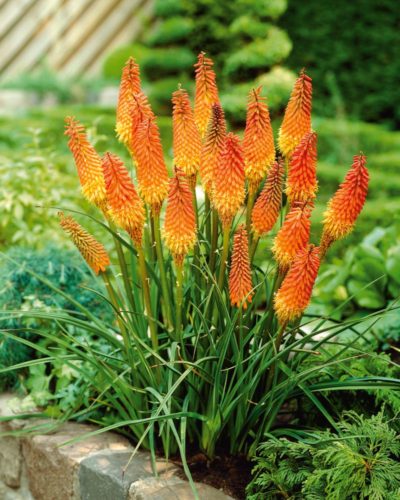
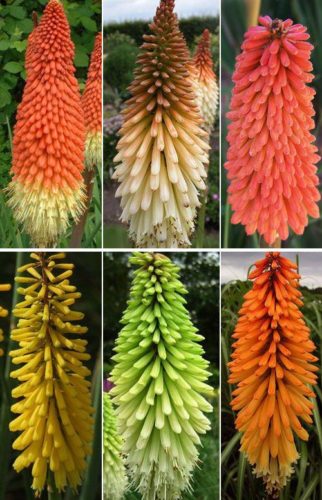
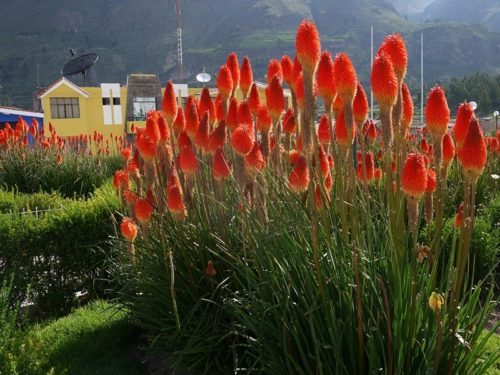

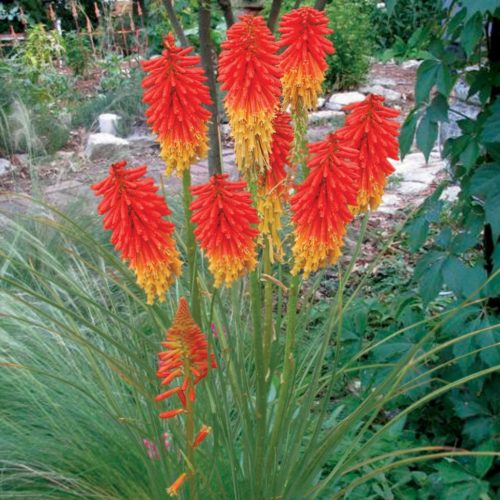
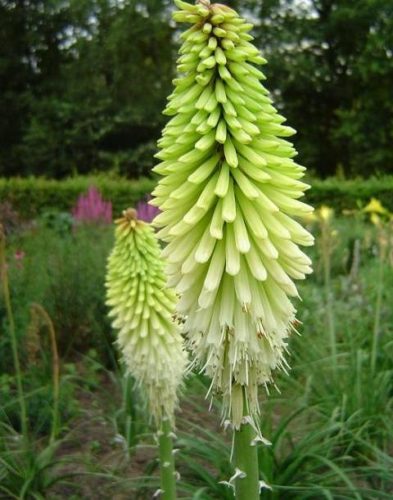
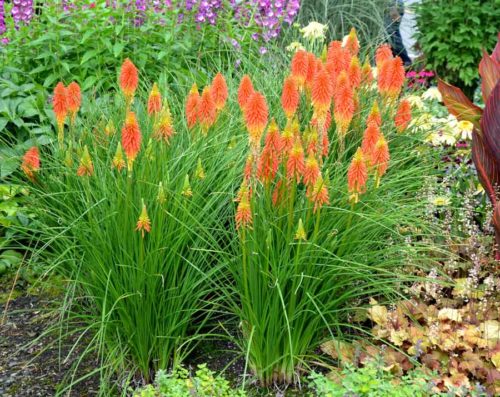
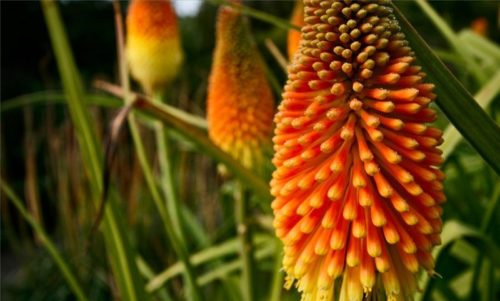

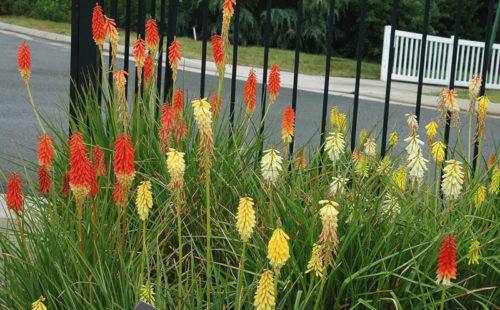













 Start a discussion ...
Start a discussion ...